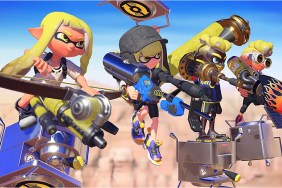Freedom is
an endless struggle.
Freelancer! The name alone invokes a
flood of emotions. In the four years since this game was announced, it has gone
through countless revisions, extensive trimming of content and scope, not to mention
the loss of Chris Roberts (Digital Anvil’s founder, the game’s head programmer,
concept designer and paternal Father). Needless to say, we were plagued by a dilemma
that was equal parts exuberance and utter terror. Were we dealing with the birth
of a new star or a black hole?
Things change to mouse-flight mode during combat. The nose of your
ship and pitching are locked to your cursor’s movement. Move the cursor slightly
left and you will veer slightly left, whereas moving the cursor to the edge of
the screen makes for a sharper, more severe bank or turn. Without the mouse wheel,
W is accelerate, while S, A and D remain brake-to-reverse, left strafe and right
strafe, respectively.
This simple control scheme makes Freelancer highly
accessible to those of us with more knowledge about Matchbox cars than matching
speeds and controlling throttles. This innovation alone is a huge leap forward,
and proves you don’t have to sacrifice player control and functionality for mass
appeal.
When we first saw Freelancer four years back, we were simply
floored by the graphics. Thankfully, it still looks really good, akin to a more
polished Starlancer. Nebulae,
distant stars, asteroid fields and patches of space debris set an immersive backdrop.
Metal structures including enormous space stations and ships are detailed and
believable. But the particle effects are the brightest stars in Freelancer
space; explosions and gunfire dazzle with brilliant colors. You live to take down
the next Rogue or Newark Space Patrol just to show off your new toys in the field.
As if all that geeky goodness won’t be enough, they’ve thrown in an involving
multiplayer component, which is essentially the single player minus, the, uh,
single player part. What does that mean? Well, the world is still rife with activity
and employment options, just without the campaign to tie it together. The remaining
plot surrounding the tight network of solar systems, space stations and many factions
is still played out through a series of news feeds at the various bars littered
throughout space. As in the single player campaign, this is where you pick up
work from NPCs or the job board. You can also trade commodities, credits and parts
with player characters. But more importantly, you can join player “groups” and
share missions and profit. I can already imagine being in a trade lane half a
galaxy away rushing to help a buddy being pummeled by some bounty hunters for
trying to loot their Luxury Consumer Goods.
Ultimately, this nearly complete
build of Freelancer has left me stunned. It has been a long, bumpy road
through time and space, but the trip has seemingly refined and aged the game nicely.
Great graphics, vast space, open-ended gameplay, solid control, cinematic dogfights,
reputation tracking, ship customization, extensive trading…this game should
have it all. An early March 2003 release gives new meaning to the term “event
horizon.”










